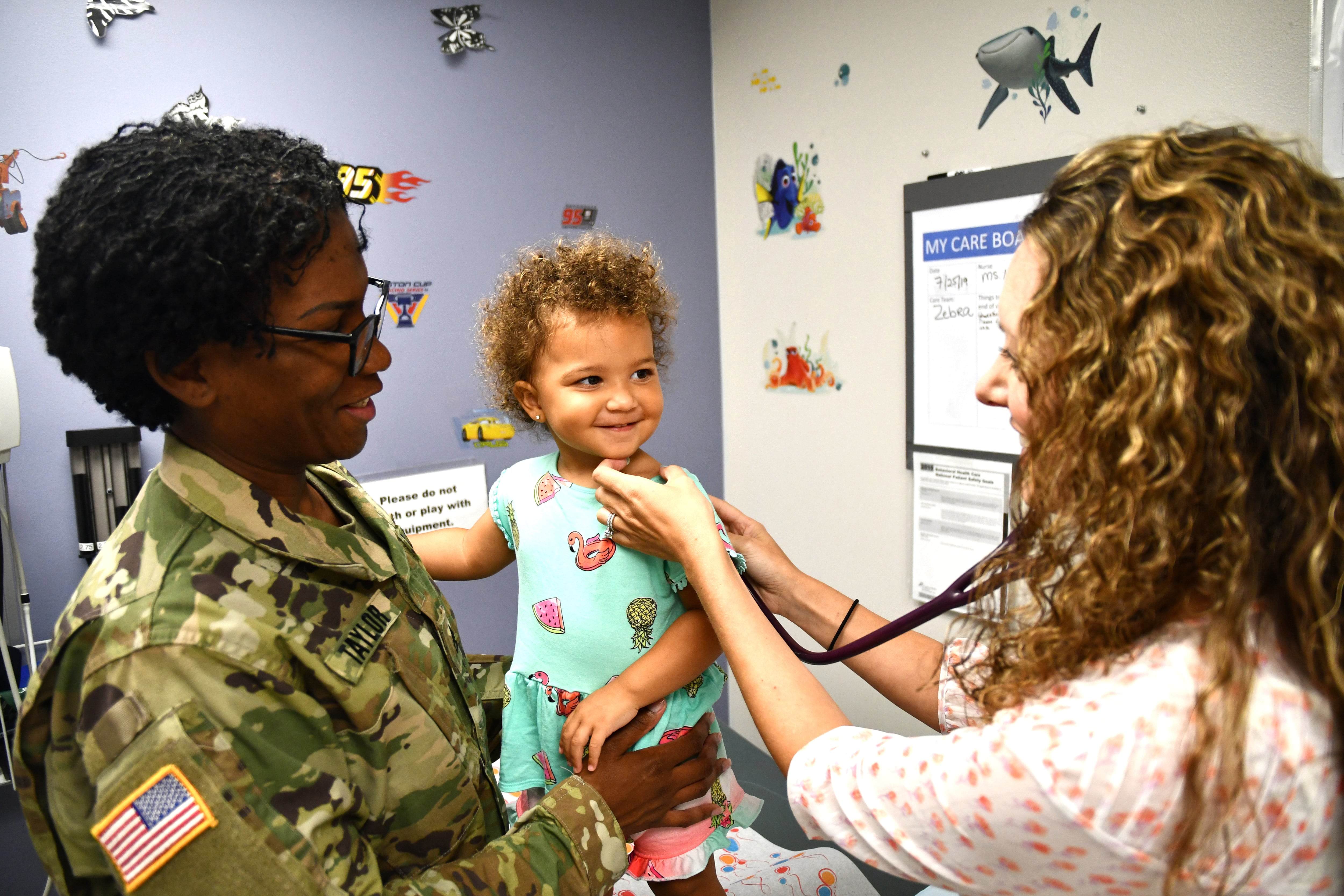Editor’s note: Have problems in the military health care system recently affected you or your family? Email geoffz@militarytimes.com to share your thoughts.
A new Defense Department watchdog report raises troubling red flags about the state of military health care for the 9.6 million uniformed and civilian employees, contractors, veterans and family members who depend on the system.
Beneficiaries around the globe are grappling with provider shortages, subpar network options and long wait times, the Pentagon inspector general said in the Nov. 29 report. The publication compiled trends that watchdogs in each military branch have uncovered in recent years.
Chief among the issues is the challenges troops and their families face when trying to access health care at military treatment facilities in the United States and overseas.
Service members consistently ranked medical care as a top cause of dissatisfaction during a series of focus groups conducted by the Office of the Naval Inspector General in 2023, according to the report. They protested their inability to access care in a timely manner for everything from routine primary care visits to mental health appointments.
RELATED

Those issues were particularly acute “in locations that are either small, remote or [that] recently downsized from a hospital to a clinic,” the report said.
The Navy noted that sailors and their families struggled to find care near Joint Base Pearl Harbor-Hickam, Hawaii; Naval Air Station Lemoore, California; NAS Whidbey Island, Washington; and NAS Pensacola, Florida, often due to a shortage of military medical facilities and local in-network providers, the report said.
“Small [military medical facilities] often only serve active duty service members and send all other beneficiaries, such as family members and retirees, to the TRICARE provider network,” the report said.
But while some must rely on TRICARE’s network of doctors and specialists, the DOD IG report warned that “some TRICARE networks are not robust or adequate to meet this need and beneficiaries may have difficulty obtaining network care.”
At Naval Health Clinic Pearl Harbor, Hawaii, specialty care is limited. Only active duty troops may enroll at the site.
This means beneficiaries are shunted onto a civilian provider network with just one Level 1 trauma center, and that lacks available appointments for specialties like gastroenterology, psychiatry and urology within a DOD-prescribed 28-day window.
At California’s Naval Hospital Lemoore and Naval Health Clinic Fallon, network referrals have jumped 34% in the past three years, but it takes 36 days on average to snag an appointment in the network, the report said.
RELATED

The Department of the Air Force Inspector General also reported complaints about network access in smaller markets.
Both the Air Force and Navy IGs pointed to a lack of medical providers willing to accept TRICARE — the global health insurance program for troops, retirees and their families — and a general lack of specialty providers.
Overseas, the Marines are facing health care issues in Okinawa, Japan, where patients struggled to see doctors for everything from obstetrics to physical therapy.
At one point on June 7, the chief Air Force medical officer at the 18th Medical Group at Kadena Air Base, Japan, warned that Kadena’s pregnant patients would need to deliver their babies at a Japanese hospital or be flown to a stateside military medical facility, due to staffing shortages that were expected to be resolved by the end of the year.
The Defense Health Agency responded in a June 8 memo that the Navy hospital in Okinawa could provide “full labor and delivery services for all beneficiaries in the [U.S. Indo-Pacific Command] area of responsibility.” The Air Force retracted its warning the next day.
The DOD inspector general has also begun receiving complaints about MHS Genesis, the Pentagon’s new electronic health records system. Appointment wait times have stretched to several months since the system started rolling out in 2017, frustrating some beneficiaries to the point of paying out of pocket for off-base care.
Military officials, recruiters and lawmakers have also cited Genesis as a key contributor to the nation’s ongoing recruiting crisis.
RELATED

Staffing shortages have also plagued each service. The Naval IG predicted that more than 36% of family medicine billets at stateside military treatment facilities would be vacant by summer 2023.
“The Navy does not have enough active duty family medicine physicians to meet current requirements due to unprecedented attrition and new operational requirements,” the DOD IG report stated. “The Naval IG also provided data from [the Navy’s Bureau of Medicine and Surgery] showing that clinic staffing at many [military treatment facilities] has been reduced over the last 5 years.”
Military medical members told investigators earlier this year that general surgeons are unevenly distributed at different facilities, leading to a glut of surgeons at one location and a lack of them at another.
“The complainant stated that general surgeons at a large military medical facility with a surplus of surgeons have significantly less work than those at other facilities, and this misallocation led to understaffed [facilities] not being able to provide appropriate health care to their beneficiaries,” the IG report stated.
For instance, one emergency department at an unidentified “large military medical center” was operating with 50% staff, the report said. Some officials have cited burnout as one reason behind a wave of resignations.
Meanwhile, the report argues that providing timely access to mental health services continues to be a challenge for the military medical system.
On the Army side, a 2020 assessment revealed that soldiers stationed in South Korea “identified limited access to health care as one of the factors that contributes to suicidal behavior,” according to the DOD IG. Service members noted that it took them six weeks to be seen by a medical provider.
The Defense Health Agency, the Pentagon entity tasked with managing military health care, did not respond to the watchdog’s recommendations ahead of the report’s publication.
“Despite being provided an opportunity to respond to the report and an extension of the original due date, the director of the Defense Health Agency did not respond to the recommendations in the report,” the report said. “Therefore, the recommendations are unresolved.”
Geoff is the managing editor of Military Times, but he still loves writing stories. He covered Iraq and Afghanistan extensively and was a reporter at the Chicago Tribune. He welcomes any and all kinds of tips at geoffz@militarytimes.com.




